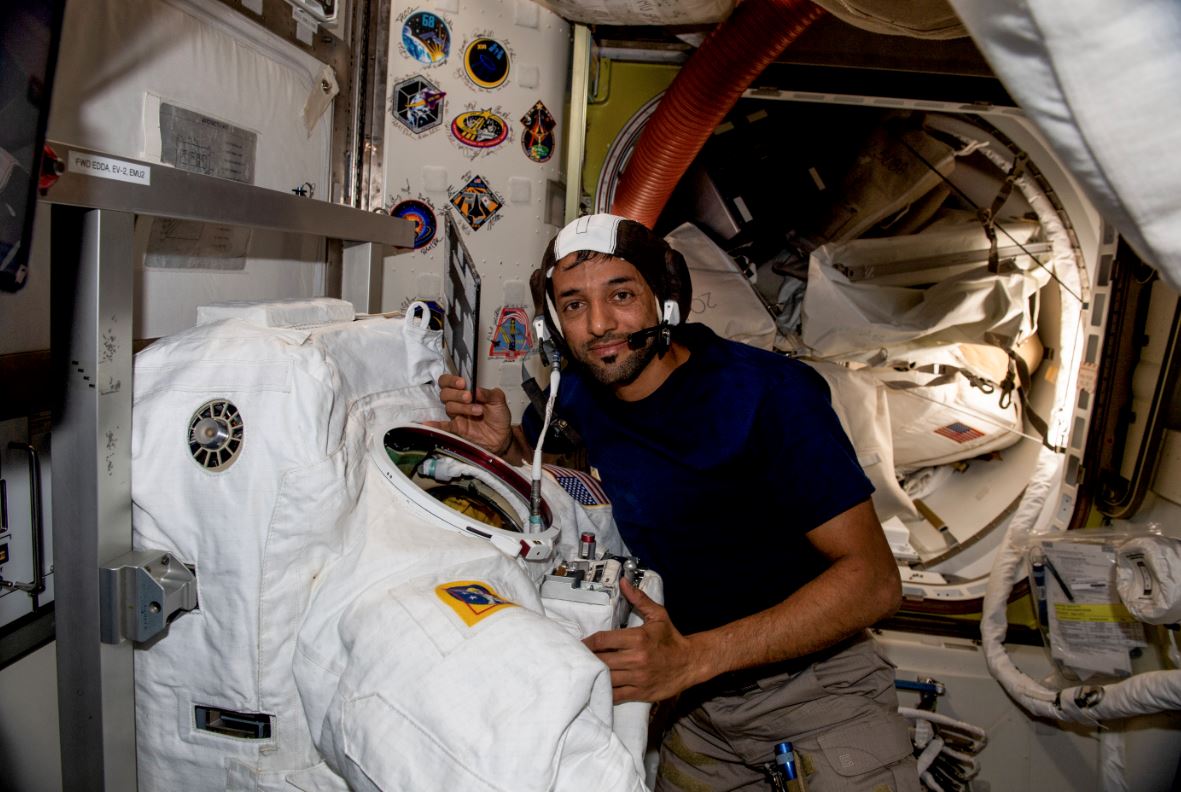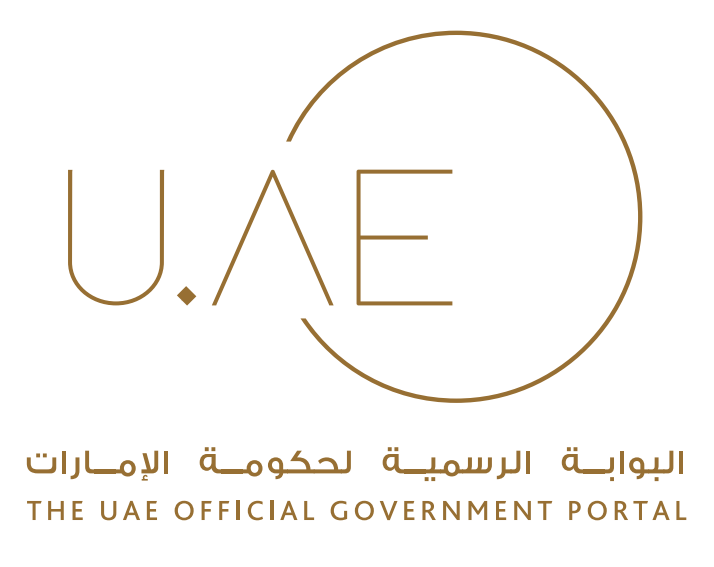Sultan Alneyadi set to make history by becoming the first Arab astronaut to perform a spacewalk on the International Space Station
UAE will become the 10th country to perform a spacewalk on the ISS on 28 April 2023
AlNeyadi will be part of the 262nd spacewalk in support of assembly, maintenance, and upgrades on the space station
Astronauts selected for spacewalks on the ISS undergo a rigorous selection process based on their skills, experience, and adaptability to the challenging environment of space
AlNeyadi will be accompanied by NASA Flight Engineer Stephen Bowen during the mission that is projected to last approximately 6.5 hours
The Mohammed Bin Rashid Space Centre (MBRSC) today announced that Sultan AlNeyadi will become the first Arab astronaut to undertake a spacewalk during Expedition 69 on the International Space Station (ISS). Scheduled for 28 April, the UAE will become the 10th country to perform a spacewalk on the ISS. AlNeyadi will be part of the 262nd spacewalk in support of assembly, maintenance, and upgrades on the space station.
Astronauts selected for spacewalks on the ISS undergo a rigorous selection process based on their skills, experience, and adaptability to the challenging environment of space. They must demonstrate exceptional proficiency in various fields, such as engineering, robotics, and life support systems, as well as excellent physical fitness and mental resilience.
Spacewalks, also known as Extravehicular Activity (EVA), on the ISS are crucial for maintaining, upgrading, and enhancing the orbiting laboratory's capabilities. These spacewalks allow astronauts to perform tasks such as maintenance and repair of essential systems, installation of new technology and hardware, and assembly and construction of the ISS modules. Furthermore, spacewalks on the ISS symbolise international cooperation, with astronauts from various countries collaborating and promoting the sharing of knowledge and resources.
Training
Given the high risk associated with spacewalks, only select astronauts who are qualified get the chance to perform the critical task. The EVA process is not just physically challenging due to the pressurised resistance of the suit, it is also mentally demanding – astronauts have to focus on the work they are doing as well as their safety, a vast number of potential tools as well as interact with the crew and the team at mission control.
AlNeyadi trained for more than 55 hours at NASA’s Neutral Buoyancy Laboratory (NBL) at the Johnson Space Center in Houston, Texas in preparation for spacewalks. During his time at the NBL, AlNeyadi underwent nine runs of six hours each, training underwater simulating spacewalks utilising the full mock-up of the ISS.
EVA on Expedition 69
The fifth spacewalk out of the ISS this year and the third for Expedition 69 will be a momentous occasion as NASA Flight Engineer Stephen Bowen and AlNeyadi work together to carry out essential tasks. The highly anticipated EVA is projected to last approximately 6.5 hours, providing the astronauts with the unique opportunity to experience the vast expanse of space while working to maintain and upgrade the ISS. Their teamwork and collaboration will not only showcase their individual skills but also emphasise the importance of international cooperation in advancing human space exploration.
One of the primary objectives of the EVA will be to retrieve a crucial Radio Frequency Group (RFG) unit, which is an integral component of the ISS's S-Band communications string. This essential piece of communications equipment will be returned to Earth on a SpaceX flight.
In addition to the primary task, AlNeyadi and his team will be working on a series of preparatory tasks related to the solar array installation EVAs planned for later in the mission. The solar arrays play a pivotal role in powering the ISS, providing clean and renewable energy to support the various experiments, systems, and daily operations on board.
His Excellency Hamad Obaid AlMansoori, Chairman of MBRSC, said, "Sultan AlNeyadi's historic spacewalk is a testament to the UAE's unwavering dedication to advancing the frontiers of space exploration and fostering international cooperation. As the first Arab astronaut set to perform an EVA, AlNeyadi carries the aspirations of the entire region and symbolises the limitless possibilities of our collective achievements. This milestone is also an embodiment of our long-term vision to strengthen the UAE's position as a global leader in space, science, and technology, as we continue to inspire future generations to pursue knowledge and innovation relentlessly."
His Excellency Salem Humaid AlMarri, Director General, MBRSC, said, "As the first Arab astronaut set to perform a spacewalk, Sultan AlNeyadi's milestone exemplifies our commitment to pioneering space exploration and contributing to the global space community. This remarkable event, taking place during the longest Arab space mission in history, not only signifies a remarkable achievement for the UAE and the region, but also highlights the continued international collaboration and scientific advancements on the ISS.”
One month in space
AlNeyadi recently completed one month in space, after launching from Cape Canaveral in Florida with his Crew-6 team members on 2 March at 09:34 AM UAE time. The crew then docked with the ISS after a 25-hour flight on 3 March at 10:40 AM UAE time and entered the station at 12.45 PM UAE time on the same day.
AlNeyadi has officially commenced Expedition 69 along with his crewmates, following the recent undocking of the Soyuz MS-22 spacecraft. Human research activities have dominated the crew’s schedule on the ISS, which included ultrasound scans, vision checks, and hearing exams. AlNeyadi participated in various activities alongside his fellow crewmates. The astronauts aimed to gain insights into space-caused and Earth-bound heart conditions, with Bowen attaching electrodes to himself and marking veins for the Vascular Aging investigation. In another session, Bowen, Frank Rubio, and Dmitri Petelin performed eye checks on their crewmates, including AlNeyadi, using standard medical imaging gear found in an optometrist’s office on Earth.
Space physics was also part of the research agenda, as scientists and engineers sought to understand how Earth-created materials react to microgravity conditions. AlNeyadi further focused on cargo work, offloading some of the 2,800 kg of new science experiments, crew supplies, and station hardware delivered by the SpaceX Dragon resupply ship. Meanwhile, the crew continued with various experiments, such as servicing samples inside the Electrostatic Levitation Furnace and studying the dispersion of bubbles and droplets in liquids for the Foams and Emulsions experiment.
The crew will be further conducting multiple experiments, including investigating the effects of microgravity on material combustion to enhance spacecraft safety, testing a novel tool for deep-space immune monitoring, and advancing research on 3D-cultured cardiac muscle tissue to evaluate human cardiac function in microgravity. AlNeyadi will also be involved in community outreach programmes, including live calls and ham radio interactions, in addition to maintenance tasks on board the ISS.
The UAE Astronaut Programme is one of the projects managed by MBRSC under the UAE’s National Space Programme. It is funded by the ICT Fund of the Telecommunications and Digital Government Regulatory Authority (TDRA), which aims to support research and development in the ICT sector in the UAE and promote the country’s integration on the global stage.









 For an optimal experience please
For an optimal experience please